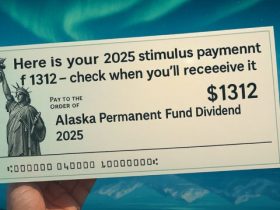Student loan experts advised parents to reconsider if they planned to use a federal parent PLUS loan to help pay for their child’s education in the fall.
Federal parent PLUS loans are frequently used by families to cover any financial gaps that remain after all federal grants, scholarships, and student aid have been used.
According to Department of Education data, 3.8 million parents borrowed $112.2 billion in PLUS loans in the final three months of 2023. Those loans will be quite costly for 2024–2025 with an interest rate of 9.08%, plus expenses, which is more than three decades high.
“It’s worth taking a look at how private loan options compare for the remainder of your education financing needs, particularly if you are considering taking out…PLUS loans,” Brian Walsh, head of advice and planning at online bank SoFi stated.
How much can a private loan help you save?
According to student loan experts, taking out a private loan could potentially save you tens of thousands of dollars over the course of a 10-year loan.
Using rates from the previous year for a $18,000 loan with a 10-year term, Thomas Graf, executive director of Massachusetts Educational Financing Authority (MEFA), a non-profit state lender, provides the following comparison:
- A parent PLUS loan with an 8.05% APR for 2023–24 would need a payment of $228 per month, or $27,423 over the course of the loan.
- Monthly payments for a MEFA loan at 6.47% equal $204, or a total of $24,493.
He said that if the origination, or service, cost for the PLUS loan had not been included, “you would have saved 10.7% over the life of the loan.”
Even though origination fees are deducted from your payout, interest is still charged on them. The cost was 4.228% of the loan amount the previous year. Graf stated that in order to obtain $18,000, you could also need to borrow $18,000 plus the origination cost.
“When considering private versus federal PLUS loans, it is important to consider the cost of the origination fee in addition to interest rates,” Walsh stated. “Even if federal rates are lower than private, sometimes with the addition of the origination fee, it will still cost you more over time.”
Read Also: An In-Depth Analysis: Is a $10,000 Home Equity Loan Right for You?
Why are the rates on federal student loans so high?
Annual student loan rates are determined by taking into account the results of the most recent 10-year Treasury auction held in May.
Over the past few years, the 10-year Treasury yield has trended higher as inflation has climbed and the Federal Reserve has aggressively raised the benchmark short-term Fed funds rate to battle it. In general, higher short-term rates and high inflation drive up 10-year yields.
What drawbacks come with taking out a private student loan?
The most frequently mentioned drawbacks are that an income-driven repayment plan will result in smaller payments and the loss of forgiveness.
Experts quickly point out that none of those products has really helped federal parent PLUS loans. Some parents have even accepted that debt as their final burden. Federal parent PLUS loans cannot be transferred to a kid for repayment; however, private student loans can.
If a person passes away or becomes disabled, their private student loans may not be canceled. Your lender will decide those. More accommodating terms and payment plans are possible for private student loans, but you have to know what they are.
Not everyone is eligible for a private loan, much less a reduced rate. According to Walsh, the rates on private loans are determined by the borrower’s credit history and repayment capacity, but federal loans do not.











Leave a Reply